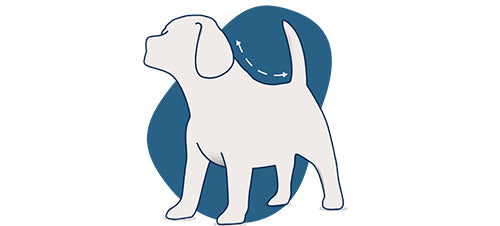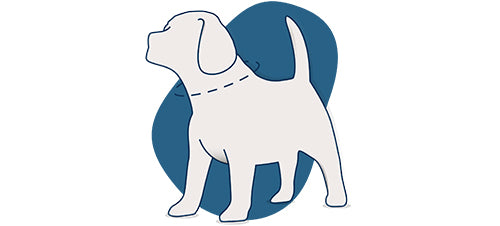Discovering that your beloved cat has been stung by a bee or wasp can be alarming. Cats are naturally curious creatures, often chasing after insects without understanding the potential dangers. If your cat is stung by a bee or wasp, it's crucial to know how to respond promptly and effectively to ensure their well-being.
Recognising the Signs of a Bee or Wasp Sting in Cats
A cat bee sting or wasp sting can cause immediate discomfort and visible symptoms. Here are some common signs to look out for:
- Swelling and Redness: The area where the cat was stung may become swollen, red, and tender to the touch.
- Excessive Licking or Pawing: Your cat may lick or paw at the sting site, especially if it's on the paw or face.
- Vocalisation: Cats might meow or hiss more than usual due to pain from the bee sting.
- Agitation or Restlessness: Discomfort may cause your cat to become unsettled.
- Difficulty Breathing: In rare cases, a severe allergic reaction can lead to breathing difficulties.
Immediate Steps to Take When Your Cat Is Stung

- Stay Calm: Your calm demeanour can help soothe your cat during this stressful time.
- Inspect the Sting Site: Gently check for the presence of a stinger. Bees leave behind a stinger, while wasps do not.
- Remove the Stinger: If you see a stinger, scrape it away with a flat object like a credit card. Avoid using tweezers, as squeezing can inject more venom.
- Clean the Area: Gently clean the sting site with mild soap and water to prevent infection.
- Apply a Cold Compress: If your cat will let you try and place a cold pack wrapped in a cloth on the area to reduce swelling and numb pain.
- Monitor for Allergic Reactions: Keep a close eye on your cat for signs of a severe reaction, such as vomiting, diarrhoea, or difficulty breathing.
When to Seek Veterinary Care
While many bee stings in cats result in mild reactions, certain situations require immediate veterinary attention:
- Multiple Stings: If your cat was stung multiple times, the increased amount of venom can be dangerous.
- Stings in Sensitive Areas: A cat stung by a bee in the mouth or throat can experience swelling that may obstruct breathing.
- Severe Allergic Reactions: Symptoms like hives, rapid heartbeat, or collapse indicate a serious reaction.
Understanding Bee Bites vs. Bee Stings
It's important to note that bees and wasps sting rather than bite. However, some people refer to the sting as a bee bite. Regardless of terminology, the treatment for a bee sting cat or a bee bite cat remains the same.
How To Prevent Future Stings
To minimise the risk of your cat getting stung by a bee or wasp:
- Supervise Outdoor Time: Keep an eye on your cat when they're outside, especially during peak insect activity.
- Eliminate Attractants: Remove or manage plants that attract bees and wasps in areas where your cat plays.
- Check for Nests: Regularly inspect your property for bee hives or wasp nests and have them professionally removed if found.
- Indoor Entertainment: Provide engaging toys to reduce your cat's interest in outdoor hunting. We stock a range of interactive cat toys which are perfect for keeping your cat busy.

Special Considerations for Cats with Allergies
If your cat has a known allergy to insect stings, your vet may prescribe an emergency treatment plan, which could include antihistamines or epinephrine injections. Always have these medications accessible and understand how to administer them properly.
Dealing with Specific Sting Locations
- Mouth or Throat: A bee sting in a cat's mouth is particularly dangerous due to potential airway obstruction. Seek immediate veterinary care.
- Paw Stings: A cat bee sting paw can be painful and may cause limping. Ensure the stinger is removed and monitor for infection.
Natural Remedies and Aftercare
After addressing the immediate concern, you can aid your cat's recovery with:
- Aloe Vera Gel: Apply a small amount to soothe the skin.
- Baking Soda Paste: Mix with water and apply to neutralise bee venom (note: not effective for wasp stings).
- Hydrocortisone Cream: Consult your vet before application to reduce itching and inflammation.
First Aid Supplies for bee and wasp stings
At Lords & Labradors, we understand the importance of your cat’s safety and comfort. We’ve carefully curated a range of products designed to help your feline after an insect sting, we’ve put our top 3 below.
- Charlie the Vet Wound & Skin care spray - This is more than a first aid spray, not only is it amazing for insect bites and stings, it works wonders for cuts, grazes, wounds, itchy or irritated skin, skin disinfection, hot spots and post-surgery care. It kills 99.999% of germs in seconds including bacteria, viruses, fungi and fungal spores. 100% natural, easy to apply, sting-free and safe for pets of all ages. Shop now.
- Leucillin Antiseptic Skin Care Spray - This spray is a must have for all pet owners. It kills 99.99999% of germs on contact, no surviving bacteria means no resistance to healing, demonstrating rapidly reduced recovery time. Whilst killing 99.99999% of germs on contact it is also incredibly gentle, it is non-toxic, pH neutral and does not sting or irritate making it perfect for using on your cat after a bee or wasp sting. The spray works by mirroring the body’s immune system and helps to maintain healthy itch-free skin. Shop now.
- Aqueos First Aid Spray - A sting free, PH neutral solution to disinfect cuts, wounds, rashes, itching, burn and all kinds of skin irritations. A great all round first-aid spray that works as a multi-purpose antiseptic spray. Safe on all animals, first aid spray for dogs, cats, horses, all mammals, birds and reptiles. Perfect for keeping your pet’s skin healthy It helps to quickly soothe minor-wounds, grazes and other skin irritations leaving your pet healthier, cleaner and happier. Shop now.
Conclusion
Encountering cats with bee stings or wasp stings can be stressful, but prompt and appropriate action can alleviate discomfort and prevent complications. Always prioritise your cat's health by monitoring symptoms and seeking professional help when necessary.
Shop all the first aid essentials for your cat here.



































































































